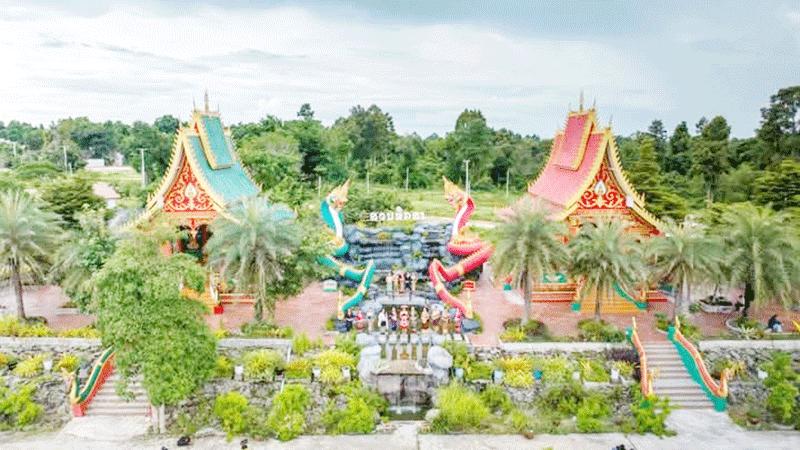 |
The Lao Ethnic Garden in Danxi village, Naxaithong district, Vientiane.
|
Lao Ethnic Garden a cultural treasure in Vientiane
This story marks the 70th anniversary of the establishment of the Lao People’s Revolutionary Party, the 50th anniversary of the founding of the Lao PDR, and the 105th birthday of President Kaysone Phomvihane this year.
If you’re looking for a cultural attraction in Vientiane that is both captivating and deeply meaningful, the Lao Ethnic Garden is a must-visit destination.
This expansive park is not only a peaceful retreat surrounded by nature, but also a living museum that vividly presents the rich diversity of the numerous ethnic groups in Laos.
The garden is located in Danxi village, Naxaithong district, Vientiane.
It was previously called the Pheuksa Garden but has been renamed the “Lao Ethnic Garden”. It tells the stories of ethnic communities through 10 traditional houses commonly used by people of various ethnic groups, with each one modelled on authentic dwellings found across the country.
Inside the houses visitors can view bedrooms, cooking stoves, and everyday household items, arranged to reflect the lifestyle and customs of each ethnic group.
Adjacent to the houses is a multimedia studio where videos play continuously, depicting various ceremonies and rituals practised by different ethnic groups. From merit-making festivals and weddings to spiritual rites, these visual stories offer an immersive insight into the spiritual world of Laos’ ethnic heritage.
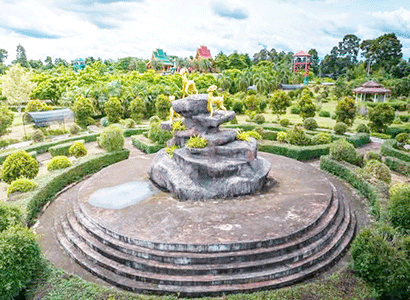 |
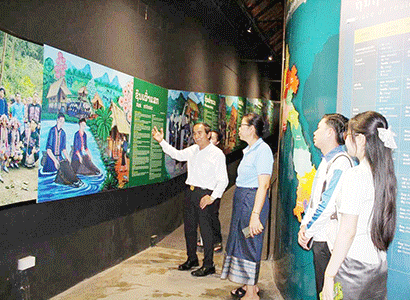 |
| An attractively landscaped area in the garden. |
Mr Phouvong Phamisith tells visitors about some of the ethnic groups represented in the garden. |
One of the most impressive stops for visitors is the photo gallery, where walls are adorned with photographs of different ethnic groups.
Descriptions in both Lao and English accompany the images, detailing the names of the groups, their special characteristics, livelihoods, diets, and cultural beliefs. Knowledgeable staff members are on hand to further explain and enrich the visitor’s experience.
Just steps away is the spacious traditional attire room, showcasing an extensive collection of ethnic costumes, accessories, and everyday items. One of the most fascinating sections features sacred and rare spiritual artefacts, including tiger fangs, ivory tusks, protective amulets, “lek lai” (mystical metal), and other ancient items — all of which are authentic, gathered during many years of travel by the garden’s owner.
Beyond the cultural exhibits, the garden offers a tranquil area where visitors can relax. Highlights include a Naga-themed pond, a man-made waterfall, cozy seating areas by the water, and a restaurant serving tasty traditional Lao dishes.
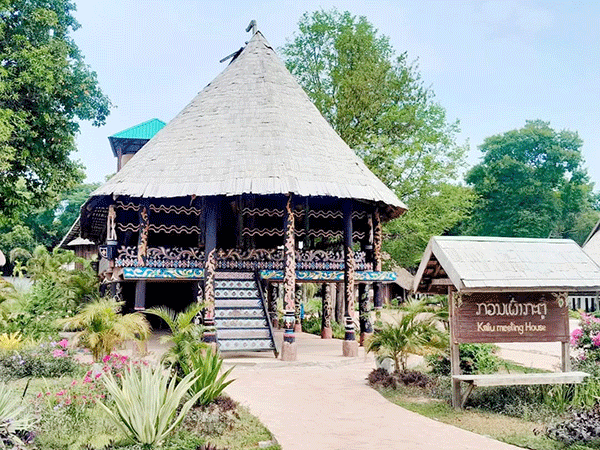 |
Traditional dwellings used by an ethnic group.
|
The man behind this remarkable place is the President of the Lao Ethnic Garden, Mr Phouvong Phamisith, who has dedicated more than 30 years to studying the traditions of ethnic groups throughout Laos.
He says he was inspired by a deep appreciation for the uniqueness and diversity of these communities, and from a strong desire to preserve their traditions before they disappear.
“I want this garden to become one of the finest tourist destinations and a place to preserve the culture of our ethnic communities — before these traditions vanish,” Mr Phouvong said.
He plans to expand the garden to accommodate more visitors and to create more space for ethnic communities to actively share their way of life. This will also provide them with new income opportunities and help boost local economies.
Every aspect of the garden reflects Mr Phouvong’s dedication to safeguarding the heritage of Lao ethnic groups, which once numbered up to 68 but are now counted at about 50. They are classified into four main language groups, namely Lao-Tai, Mon-Khmer, Hmong-Yao, and Sino-Tibetan.
Mr Phouvong said that in August the garden will host an event to celebrate the 75th anniversary of the Lao National Front, which will feature activities such as stalls selling ethnic food items and other products, cultural shows, and members of ethnic groups demonstrating aspects of their traditional lifestyle in person.This year Laos also celebrates the 70th anniversary of the establishment of the Lao People’s Revolutionary Party, the 50th anniversary of the founding of the Lao PDR, and the 105th anniversary of the birth of President Kaysone Phomvihane.
Mr Phouvong said the anniversary celebrations at the garden are a contribution to national development, especially helping to create jobs and also attracting domestic and foreign tourists to help stimulate the economy.
The garden is more than a tourist attraction — it is a living museum, a cultural sanctuary that preserves the ancestral roots of Laos for the world to discover and for future generations to learn from.
The garden is open every day from 9am to 6pm. The entrance fee is currently 15,000 kip per person but will rise to 45,000 kip when ongoing improvements are complete.
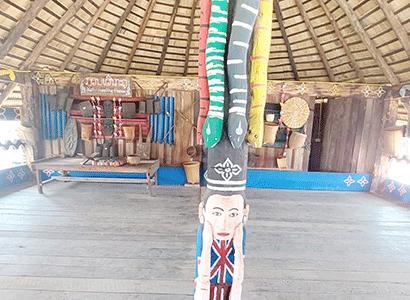 |
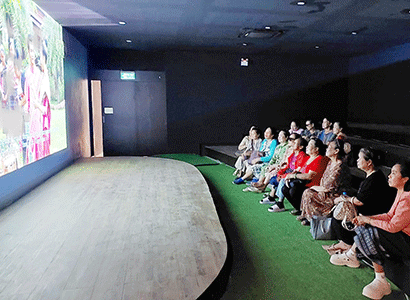 |
By Siladda Suliyong
(Latest Update May 19, 2025)
|







